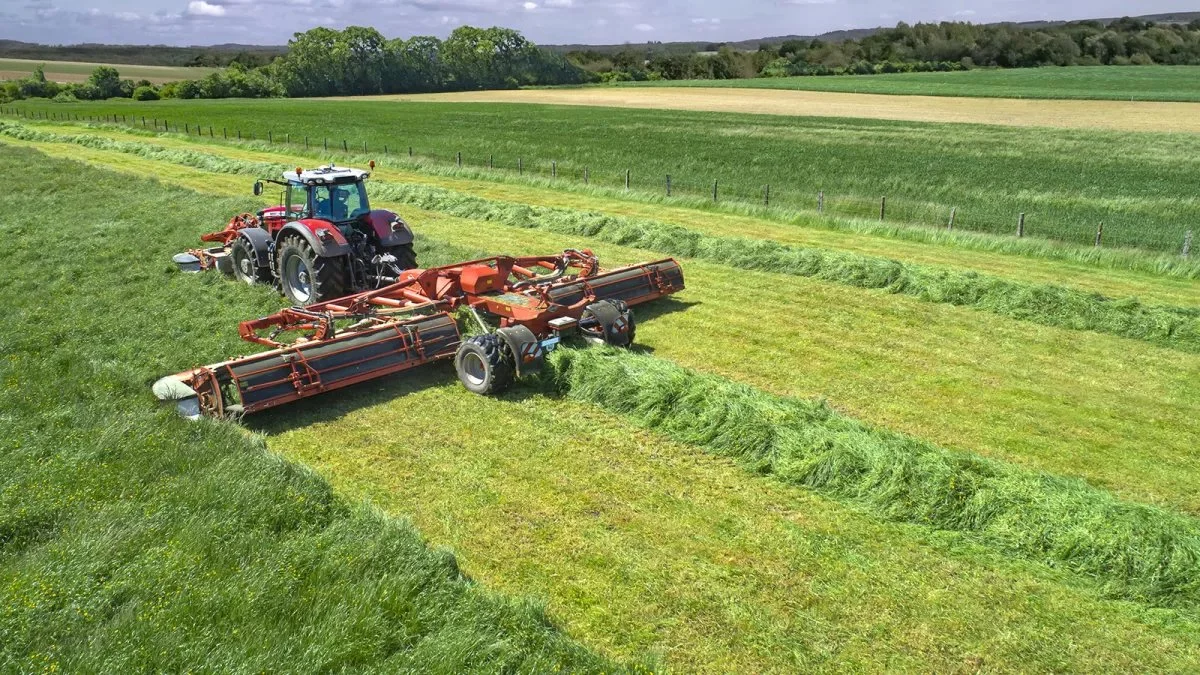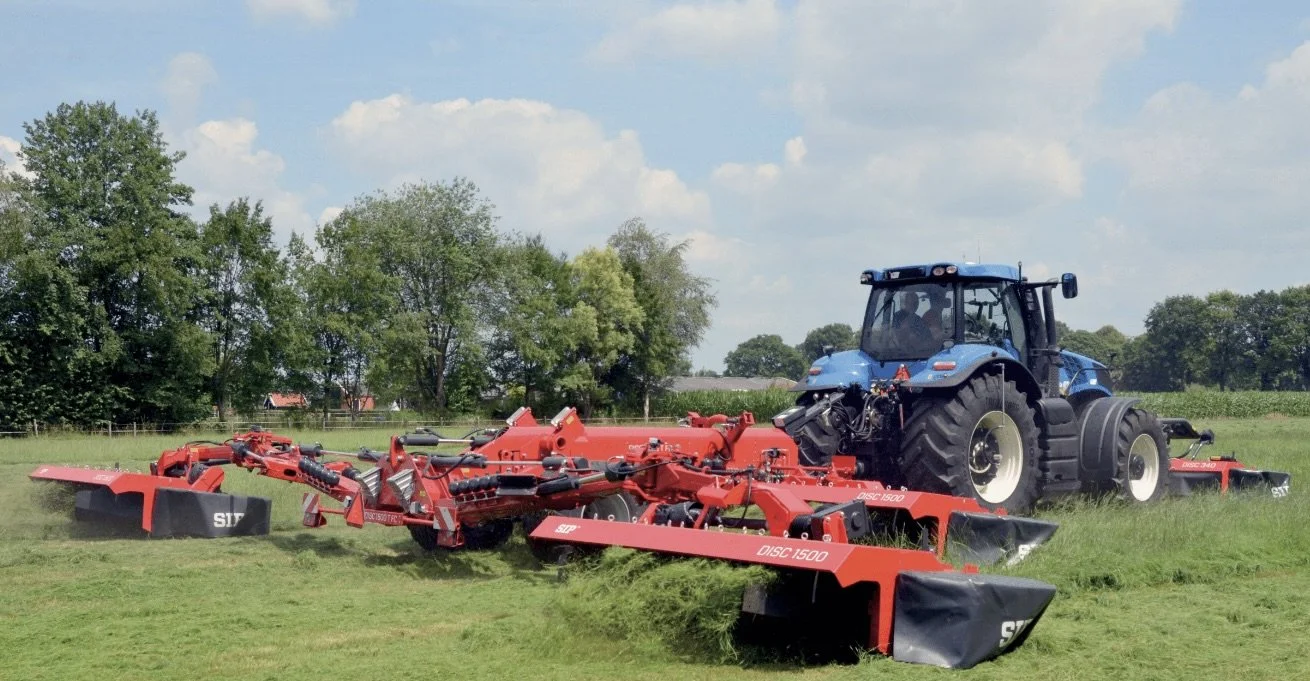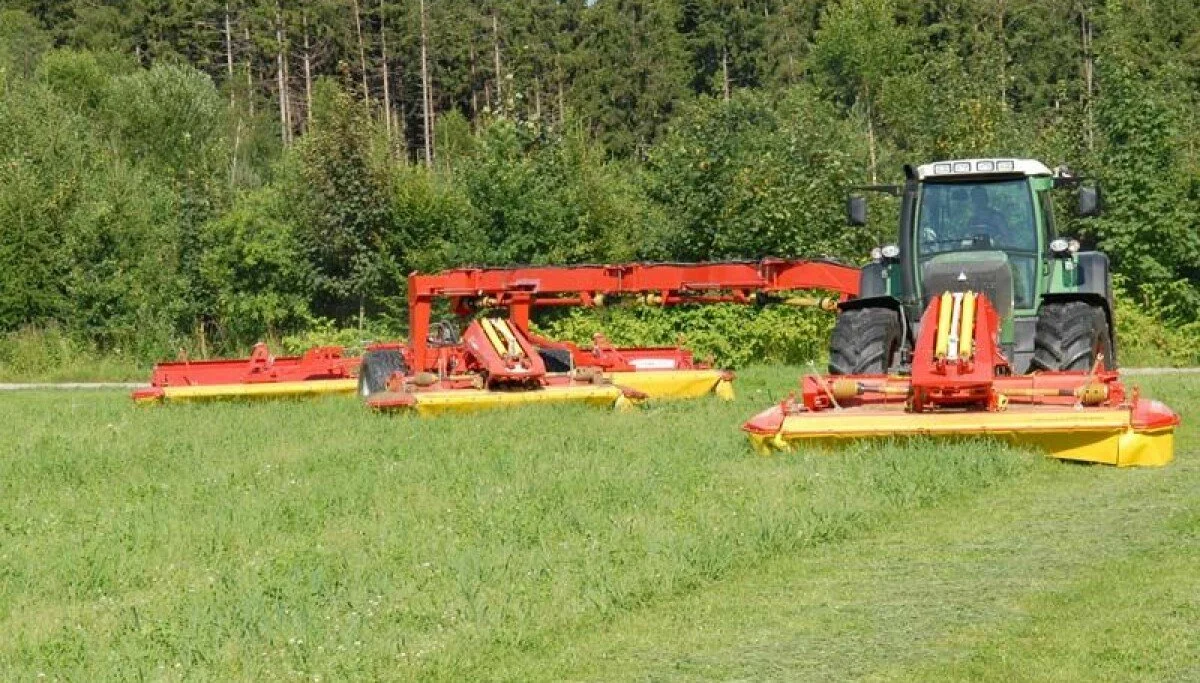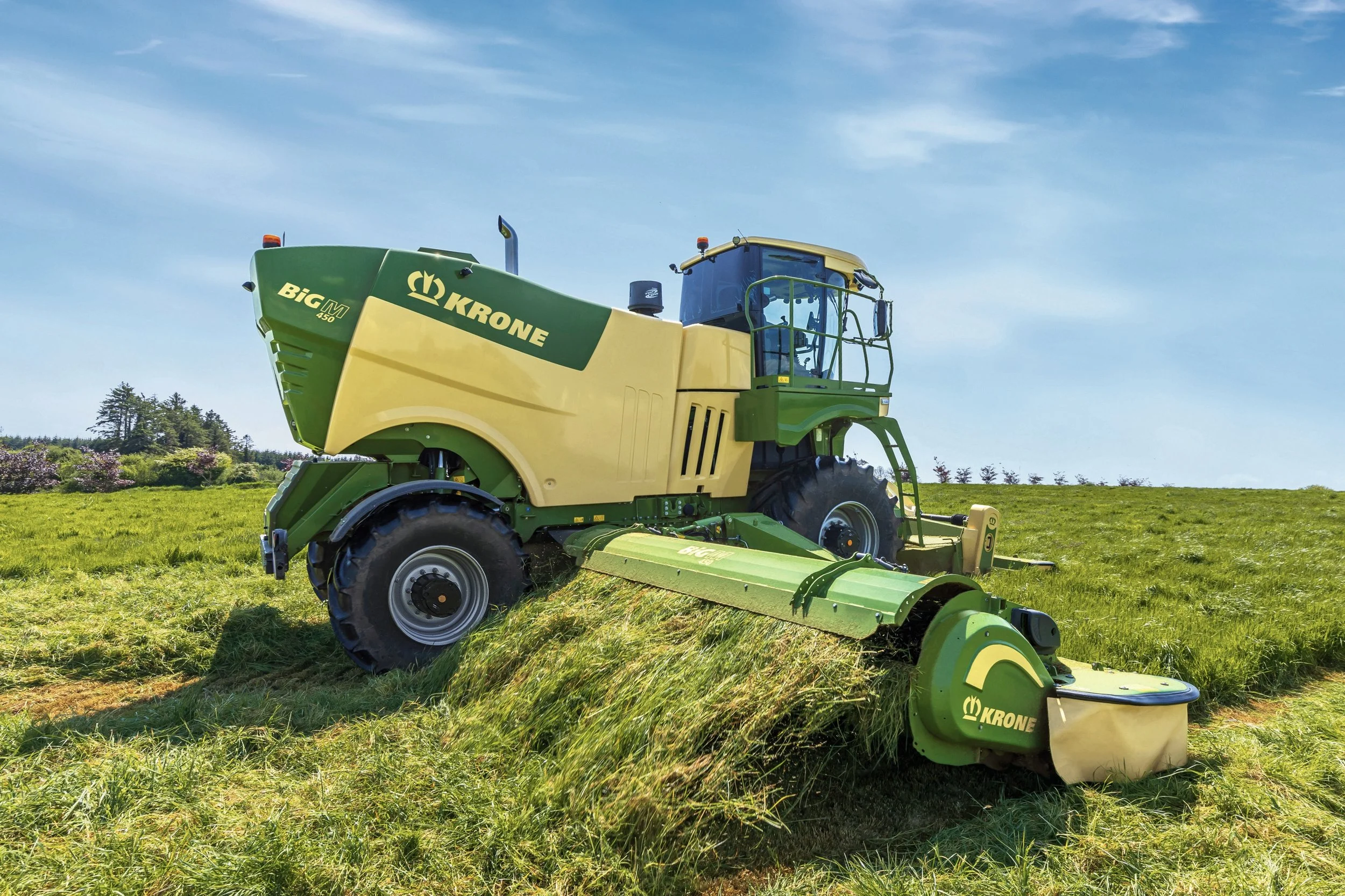Are big mowers better mowers?
In the playground long, long ago, little boys talked about tractors and the rule was always “Bigger is better and biggest is best”. Little boys do grow bigger but to most of us, the rule about bigger is still pretty relevant. This year we have been shown two new big and shiny mowers that might just be the next big thing. But are big shiny new wide mowers the future of cutting forage or are they a step too far and just too big for their own good?
The 13.4m Kuhn FC 13460 in action
New trailed combination mowers from SIP and Kuhn are being introduced offering 13m to 15m of cutting capacity with each pass; as long as you can muster enough horsepower to drive them. But what are your chances of seeing one cutting your or your neighbours grass?
What’s the biggest mower in your area?
Size is relative of course, what’s big to the narrow lanes of Cornwall might be mini on the plains of the US mid west. And whilst our technology and electronics continuously get smaller, farm kit generally gets bigger. In much of the UK, 3m mounted rear mowers will access most silage ground. Front and rear mowers cutting 6m are very common and contractors generally look towards mounted triples to knock down 8.5m to 10m of grass at each pass.
In the Ireland the self propelled mower is a bit more popular; perhaps due to the power hungry, heavy grass crops that grow so well in that part of the world. Although self propelled harvesters now dominate precision chopped forage in Europe and North America, the self propelled mower has been less dominant. Sure North America see the self propelled windrower as the go to option but the transport restrictions in Europe mean we need something that’s going to fold down to 3m if possible.
Want to cut more with each pass.
So what are your options if you want to increase your mowing output. The simplest option is to increase forward speed, but there are limits to how fast you can efficiently cut forage. Slow down a bit and increase the width of the mowers and you might do a better job - in less time. Self propelled doesn’t really help here because the fabulous Krone Big M is still cutting less than 10m at each pass. There was a 14m option in the Claas Cougar but this has now ceased production. So maybe the new Kuhn 13460RA and SIP 1500T mowers are the way to a brighter wider future.
Massive SIP 1500T mowing grass silage
The wide trailed mower isn’t new of course as Pottinger have been here before with the trailed Novacat T8 that was cutting 13m. Before that Kongskilde offered the 12m GTX Triple in some markets. These products have been withdrawn now so why do some manufactures still think the answer is more than 10m wide?
Is mowing all about horsepower?
It might just be because mowing is power hungry and tractors are getting more powerful. In most of Western Europe, 25-30 hp per metre is “sufficient” if the ground is reasonably flat. So it’s common to see the following outfits:
3m Mower with 75-100hp Tractor
6m Combination with 150-200hp Tractor
9m Triples with 225-270hp Tractor
The Krone Big M is soaked in horse power with 450hp driving 10m or cutter bar. The Cougar was maybe a bit closer to tractor levels with 480hp shared over 14m or 34hp/m. So these new offerings are going to need a serious machine to run them. Based on 25/30hp figure the Kuhn will want 335-400hp and the SIP 375-450hp. That’s a lot of ponies , and tractors that can produce that with a front pto are few and far between.
Pottinger Novacat T8 in a light crop
Horse for courses then?
I think this is really the point. These wide mowers are not aimed at the narrow lanes of the West Country nor the heavy grass crops of Ireland. They are really designed for the wide open spaces of central and eastern Europe where the crops are thin and the gateways ample. Here the horsepower is not the same limit to forward speed because the yield is just not there. These crops are light, thin and to ensile them and produce good silage, speed is very important. In these conditions these big mowers might just be the answer; time will tell.
Krone Big M 450 in grass
The popularity of the Big M in Ireland is also evidence to support the same argument. Here the crop is so dense and heavy that the horsepower demand is way above the 30hp/m figure. These crops really can use the 45hp/m that the Big M produces.
So maybe we won’t see the roll out of massive mowers any time soon, but one day maybe they will produce a set of “Silage Kit Top Trumps” cards and when they do……
If you want to know more about mowing grass for your silage clamps or would like to discuss any other aspects covered in this series, contact me at jeremy@silageconsultant.co.uk



